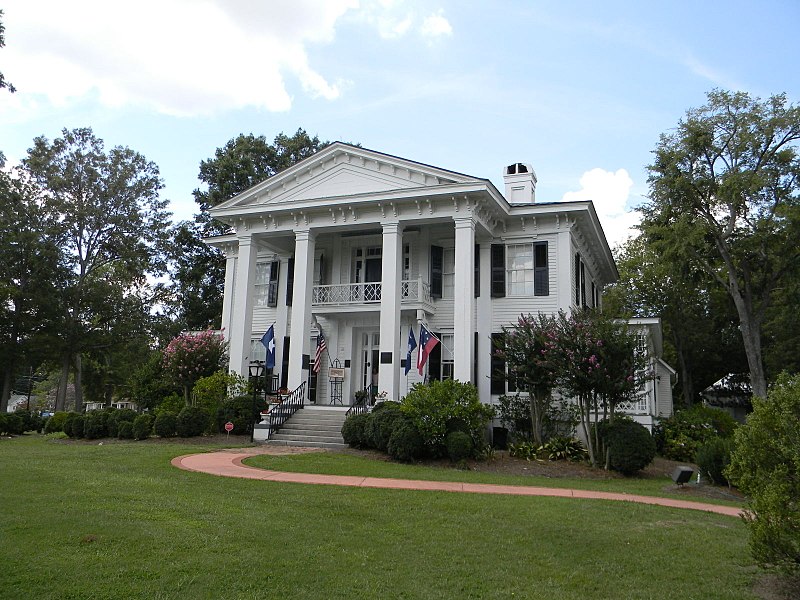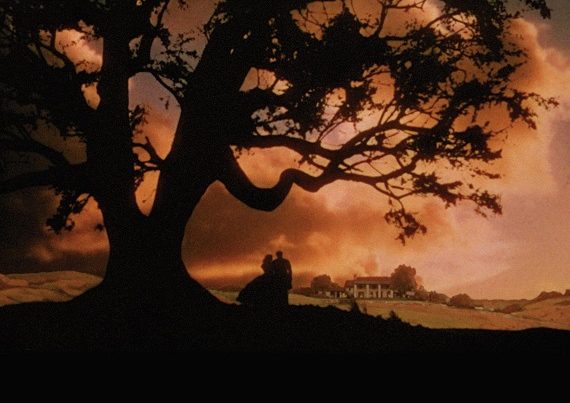
On a recent visit to Abbeville, South Carolina I visited the Burt-Stark House, one of the main historic attractions of the town and the prime reason for my visit there. Followers of the Abbeville Institute website who also have an interest in Jefferson Davis may know that Abbeville claims it as the site of Davis’ last war council on May 2, which took place during his flight from Richmond after General’s Lee’s surrender on April 9, 1865. (In addition to this meeting, the house is historically of considerable architectural interest.) It is also the place where Mrs. Davis had arrived days in advance of the President and his entourage for an approximately ten-day stay. She and her group, which included their four children, were to move on to Washington, Georgia on April 29, three days ahead of her husband’s arrival in Abbeville.[1]
Armistead Burt (1802-1883), lawyer and planter, had bought the house, known also as the Lesley-Hoyt-Simonds house, in 1862. He and his wife Martha, the favorite niece of John C. Calhoun, became good friends with the Davises during the period that Burt served the Abbeville district as a U.S. Congressman from 1843-1853.[2] It may be recalled that Davis was an admirer of South Carolina’s most famous son, who had been born in the Abbeville area and practiced law there for ten years. It was from Calhoun, as Secretary of War in the Monroe administration, that Jefferson’s brother Joseph had obtained an appointment for his younger brother to West Point.[3] While the Burts and the Davises were both in Washington at the same time—Burt as Congressman, Davis as both Senator (1847-1851, 1856-1861) and Secretary of War (1853-1857)—it is not entirely clear from the available record how they met, but it is likely that the Calhoun connection facilitated the relationship.
Davis’s stay in Abbeville was short-lived. At approximately 4:00 p.m. on May 2, he called his military advisors to a conference in the drawing room on the left side of the entry hall. (It is known in Abbeville as the last such council, but as one scholar argues it is impossible definitively to say which meeting of several on the road qualifies as truly the last.[4]) Attending were Davis, Secretary (Gen.) John C. Breckinridge, General Bragg, and five brigade commanders: Generals Ferguson, Dibrell, Vaughn, Duke, and Col. W.C.P. Breckenridge.[5] In any event, the advisors were in agreement that further military effort was futile and that the war was essentially over. Apparently Davis was shaken by this consensus; the meeting was then concluded, and he was led from the room by John C. Breckenridge (Walmsley, 345).
After resting in an upstairs bedroom for several hours, Davis with a small group of advisors—including Benjamin, J. C. Breckenridge, Mallory, and Reagan, and a cavalry escort—left the home about 11:00 p.m. and rode on toward Washington, Georgia some 50 miles distant.
Eventually the Davises reunited near Dublin, Georgia, passed through Georgia’s Abbeville, and moved on to the village of Irwinville, where they were captured by Union soldiers and taken prisoner. Thus, one part of the Jefferson Davis chronicle ends and another begins.
As for the Armistead Burts and the Burt home in which they hosted the Davises, time and the War took their toll. In 1860 Burt’s personal worth was at calculated at about $20,000 and his real estate was valued at $50,000. When Mrs. Burt died in 1869, he was bereft in more ways than one. In the 1870 census, Burt’s personal estate was valued at $2,000 and he listed no real estate. He had sold the house to a local resident, but in 1872 took legal action to collect some $8,700 that had not been paid for the purchase of the home.[6]
When Varina Davis had first arrived at the Burt home on April 19, she expressed the fear that her sojourn might lead to the burning of the house if Union soldiers found she had stayed there. It was not an idle concern; other Yankees besides Sherman had earlier been more than a little careless with matches. Burt’s reply was immediate and speaks volumes about him; there is, he said, “no better use to which the house could be put than to be burned for giving shelter to the wife and family of his friend.”[7] This was a man who knew by heart what are the truly permanent things and that, sub specie aeternitatis, the mansions of the Lord are not built by human hands. By 1865 Jefferson Davis, along with Varina, had many friends. It also fair to say that the President had acquired more than his share of enemies, some quite intent on seeing him hang. But with friends like Armistead Burt, it is also true that one is prepared to face a host of enemies and a sea of troubles until, all passions spent and the battle done, he takes his final rest.[8] Mr. Davis could have said with W. B. Yeats, “Think where man’s glory most begins and ends, and say my glory was I had such friends.”
*************
[1] “Burt-Stark House/Jefferson Davis’s Flight. Historical Marker Database. Burt-Stark House /Jefferson Davis’s Flight Historical Marker (hmdb.org). See also William J. Cooper, Jefferson Davis, American (New York: Alfred A. Knopf, 2000), 529-531. Travelers to Abbeville will also want to visit Secession Hill (on Secession Avenue). With any luck at all you will meet the President of the Secession Hill Association, Mr. Robert Davis, who lives across the street and keeps a close eye on the site.
[2] “Burt-Stark House.” Burt had also earlier served in the South Carolina House of Representatives from 1834-1835 and 1838-1841.
[3] The Law Offices of John C. Calhoun. The Law Offices of John C. Calhoun Historical Marker (hmdb.org). See also
Cooper, 28, 168.
[4] James Elliott Walmsley, “The Last Meeting of the Confederate Cabinet,” Mississippi Valley Historical Review 6, no. 3 (1919): 349. https://www.jstor.org/stable/1886329. For Walmsley the Abbeville gathering comes closer to qualifying as a war council rather than a cabinet meeting, 349. For another comparable account, see Walter L. Miller, “The Last Meeting of the Confederate Cabinet” The Southern Magazine (August 1899), 137-151. Note: The Google Books link for this article appears to be broken. To access the article, go to Google Books and enter The Southern Magazine, August 1899.” Then scroll down to it.
[5] “Burt-Stark House/Jefferson Davis’s Flight,” Historical Marker Database. Burt-Stark House /Jefferson Davis’s Flight Historical Marker (hmdb.org). See also Cooper, 531 and Walmsley, 344.
[6] Grace Washam, “Burt-Stark Mansion, Historic Buildings Survey,” Written Historical and Descriptive Data, National Park Service. Burt Stark House, Written and Descriptive Data, sc1189data.pdf, 5. Washam provides a detailed account of the various owners of the property before it was willed to the Abbeville Historic Preservation Commission in 1987 by Mary Stark Davis, 5-7. The home was designated as a National Historic Landmark in 1992.
[7] “Burt-Stark House/Jefferson Davis’s Flight.”
[8] The Burts are buried in the Trinity Episcopal Church cemetery, located to the southwest of the Church; it is accessible by an unpaved path approximately 1,000 feet from the Church grounds. It is bounded by Church St. on the east, Bowie on the north, Vienna on the south, and Long Branch on the west.






Regarding the purchase of the home by Burt, one source fixes the year as 1858. See S. Robert Lathan, Jr., M.D., Armistead Burt: The Center of the Southern Leadership Network (Boca Grande, FL: Wings Publishers, 2017), 20.
Would like to see articles on abuses which occurred during Reconstruction.
I have toured the Burt house about 10 years ago. A mansion of that time was much smaller than today but it was very large for that time.